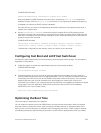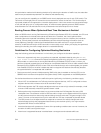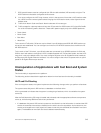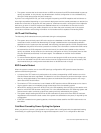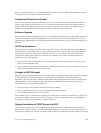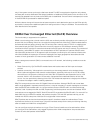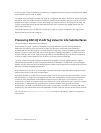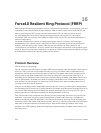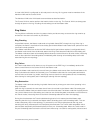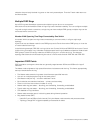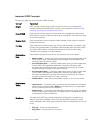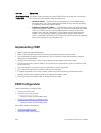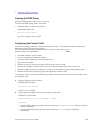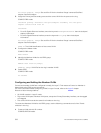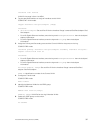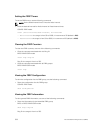A virtual LAN (VLAN) is configured on all node ports in the ring. All ring ports must be members of the
Member VLAN and the Control VLAN.
The Member VLAN is the VLAN used to transmit data as described earlier.
The Control VLAN is used to perform the health checks on the ring. The Control VLAN can always pass
through all ports in the ring, including the secondary port of the Master node.
Ring Status
The ring failure notification and the ring status checks provide two ways to ensure the ring remains up
and active in the event of a switch or port failure.
Ring Checking
At specified intervals, the Master node sends a ring health frame (RHF) through the ring. If the ring is
complete, the frame is received on its secondary port and the Master node resets its fail-period timer and
continues normal operation.
If the Master node does not receive the RHF before the fail-period timer expires (a configurable timer),
the Master node moves from the Normal state to the Ring-Fault state and unblocks its Secondary port.
The Master node also clears its forwarding table and sends a control frame to all other nodes, instructing
them to also clear their forwarding tables. Immediately after clearing its forwarding table, each node
starts learning the new topology.
Ring Failure
If a Transit node detects a link down on any of its ports on the FRRP ring, it immediately sends a link-
down control frame on the Control VLAN to the Master node.
When the Master node receives this control frame, the Master node moves from the Normal state to the
Ring-Fault state and unblocks its Secondary port. The Master node clears its routing table and sends a
control frame to all other ring nodes, instructing them to clear their routing tables as well. Immediately
after clearing its routing table, each node begins learning the new topology.
Ring Restoration
The Master node continues sending ring health frames out its primary port even when operating in the
Ring-Fault state.
After the ring is restored, the next status check frame is received on the Master node's Secondary port.
This causes the Master node to transition back to the Normal state. The Master node then logically blocks
non-control frames on the Secondary port, clears its own forwarding table, and sends a control frame to
the Transit nodes, instructing them to clear their forwarding tables and re-learn the topology.
During the time between the Transit node detecting that its link is restored and the Master node
detecting that the ring is restored, the Master node’s Secondary port is still forwarding traffic. This can
create a temporary loop in the topology. To prevent this, the Transit node places all the ring ports
transiting the newly restored port into a temporary blocked state. The Transit node remembers which
port has been temporarily blocked and places it into a pre- forwarding state. When the Transit node in
the pre-forwarding state receives the control frame instructing it to clear its routing table, it does so and
Force10 Resilient Ring Protocol (FRRP)
351



